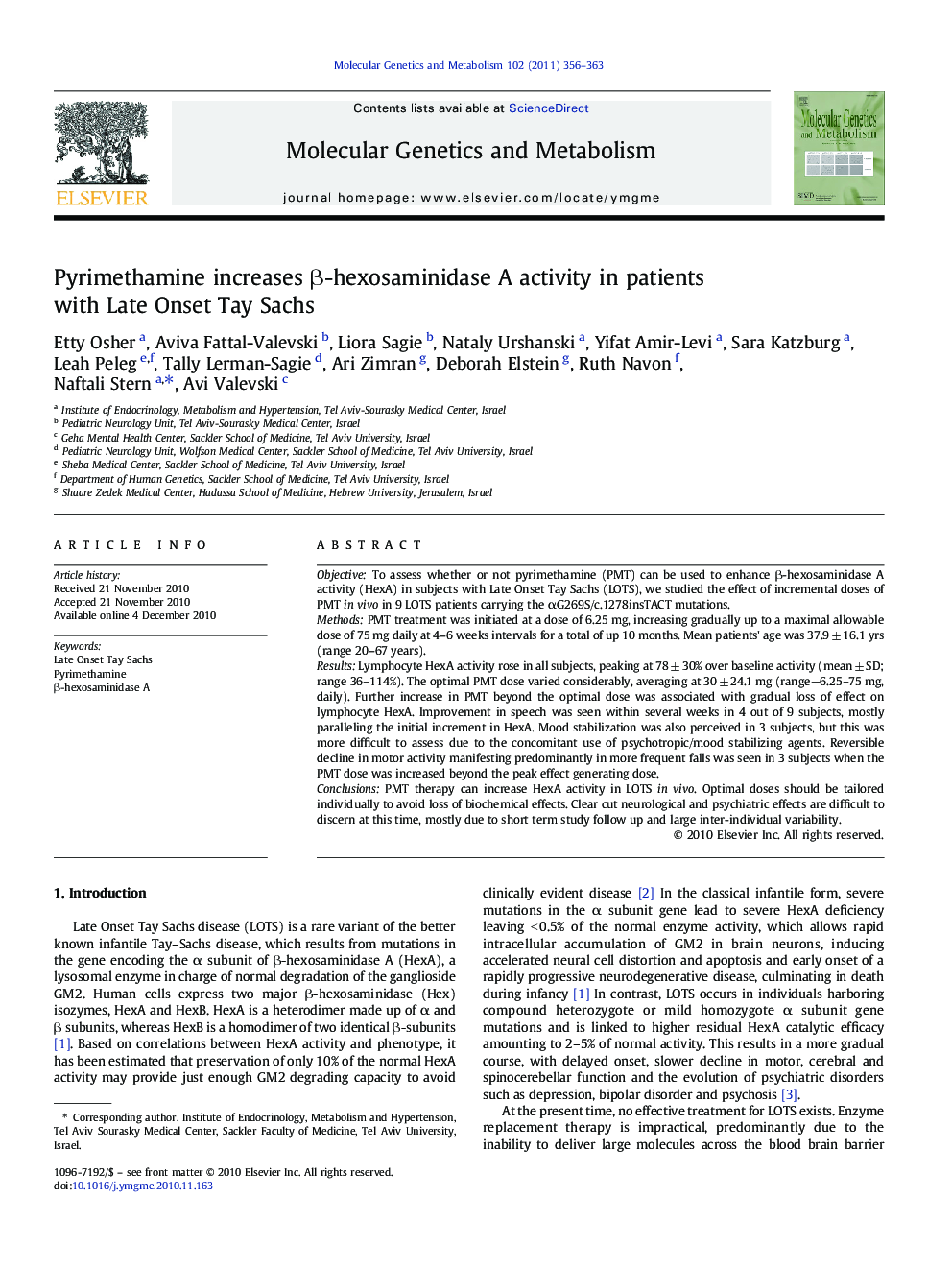| Article ID | Journal | Published Year | Pages | File Type |
|---|---|---|---|---|
| 1999431 | Molecular Genetics and Metabolism | 2011 | 8 Pages |
ObjectiveTo assess whether or not pyrimethamine (PMT) can be used to enhance β-hexosaminidase A activity (HexA) in subjects with Late Onset Tay Sachs (LOTS), we studied the effect of incremental doses of PMT in vivo in 9 LOTS patients carrying the αG269S/c.1278insTACT mutations.MethodsPMT treatment was initiated at a dose of 6.25 mg, increasing gradually up to a maximal allowable dose of 75 mg daily at 4–6 weeks intervals for a total of up 10 months. Mean patients' age was 37.9 ± 16.1 yrs (range 20–67 years).ResultsLymphocyte HexA activity rose in all subjects, peaking at 78 ± 30% over baseline activity (mean ± SD; range 36–114%). The optimal PMT dose varied considerably, averaging at 30 ± 24.1 mg (range—6.25–75 mg, daily). Further increase in PMT beyond the optimal dose was associated with gradual loss of effect on lymphocyte HexA. Improvement in speech was seen within several weeks in 4 out of 9 subjects, mostly paralleling the initial increment in HexA. Mood stabilization was also perceived in 3 subjects, but this was more difficult to assess due to the concomitant use of psychotropic/mood stabilizing agents. Reversible decline in motor activity manifesting predominantly in more frequent falls was seen in 3 subjects when the PMT dose was increased beyond the peak effect generating dose.ConclusionsPMT therapy can increase HexA activity in LOTS in vivo. Optimal doses should be tailored individually to avoid loss of biochemical effects. Clear cut neurological and psychiatric effects are difficult to discern at this time, mostly due to short term study follow up and large inter-individual variability.
